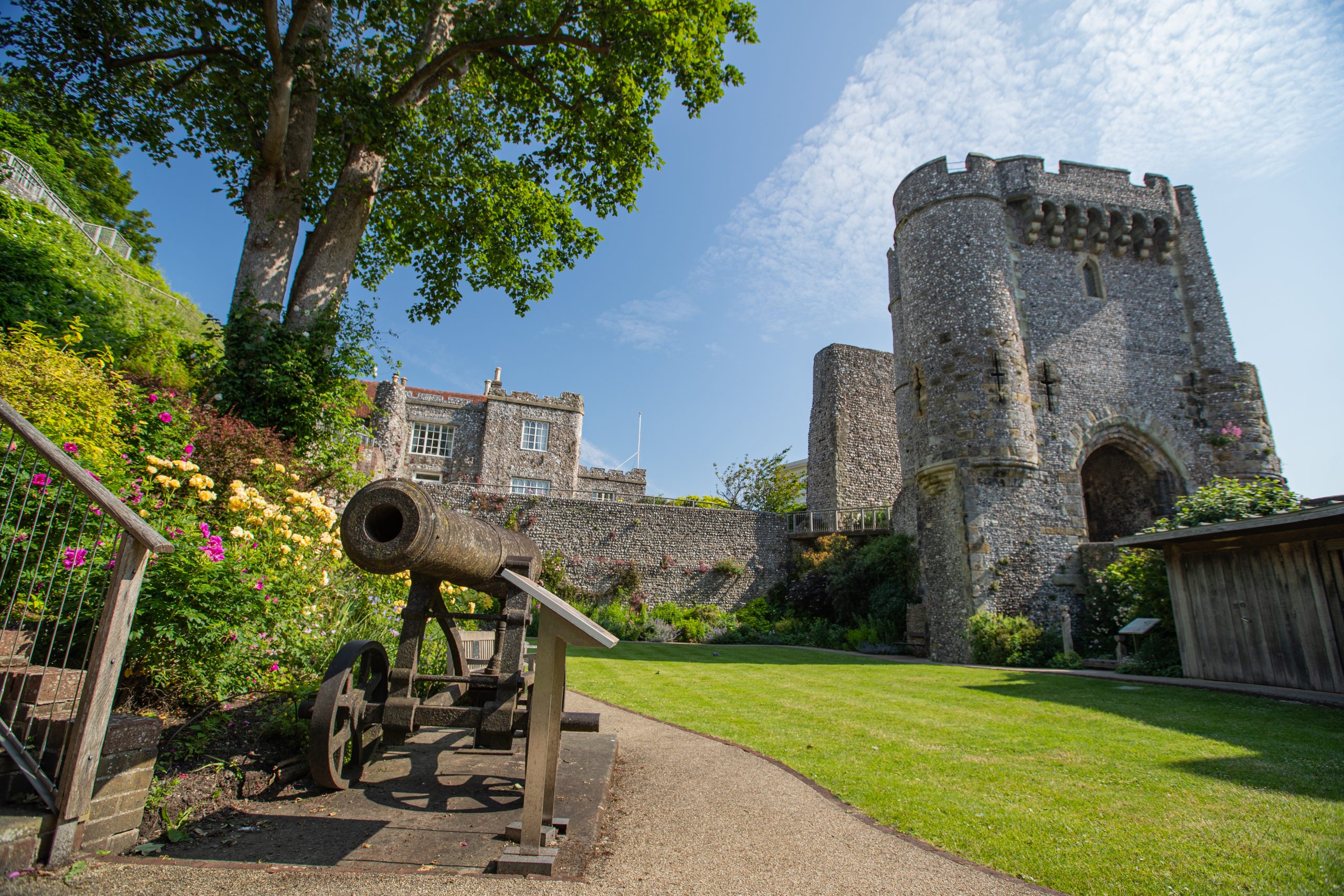
A Short History of Lewes Castle and Barbican Gate
A Short History of Lewes Castle and Barbican Gate
Built following the Battle of Hastings, Lewes Castle is a 1000-year-old Norman fortress constructed originally by supporters of William the Conqueror. Today, it is a popular with visitors for its glimpse into the past, panoramic views, and adjoining Museum of Sussex Archaeology.
Timeline
- 1849 – Tenancy of Lewes Castle becomes available
- 1850 – The Sussex Archaeological Society agree to lease Lewes Castle
- 1851 – Museum collections and small library created and visitors welcomed
- 1922 – Freehold of Lewes Castle gifted to the Society
A Norman fortress for powerful invaders
Lewes Castle dates from the 11th century – one of many castles built after the Battle of Hastings by loyal supporters of William the Conqueror.
Constructed by William de Warenne shortly after the Norman Conquest, the original castle was a simple wooden fortress at the top of Brack Mount.
Within a few years, as the Norman invaders secured their power, the temporary wooden palisade castle was replaced.
A new – mostly manmade – mount was created and an imposing stone and flint keep built on top.
As a result, Lewes Castle is one of only two castles in the country to have two mounds.
A home for The Sussex Archaeological Society
Over the first few years of The Sussex Archaeological Society, membership grew considerably. The Society was increasingly active but was without a home.
In 1849 it was reported that the tenancy of Lewes Castle was to become available. The Society resolved that ‘it would be highly desirable for the interests of the Society that it should become the tenant, with a view to establishing a Museum.’
In 1850 the Society agreed to lease Lewes Castle for £30.
Almost 75 years later, in 1922, the freehold of Lewes Castle was purchased by Charles Thomas-Stanford, the then Chairman of the Society.
He then generously gifted the Castle to the Society, to ensure it could be preserved for future generations under the Society’s careful custodianship.
Our inaugural museum and library
Over the centuries the fabric of the buildings had degraded. Timbers had rotted and stonework had worn and been lost. Sadly, repairs had been infrequent and it was clear that substantial work was necessary.
In 1851, the Society undertook its first conservation programme, making remedial repairs to the Castle, Barbican and grounds.
Museum collections and a small library were arranged in the building and visitors were welcomed for the first time. The income from admissions was used to ensure the perpetuity of the site – just like today.
Prisoners of the Crimean war
The Castle, Barbican and gardens have been enjoyed by many thousands of visitors since the Society opened the site.
During the Crimean War in 1854, 340 Finnish and Russian prisoners were housed in the naval prison at Lewes, following their capture at the Battle of Bomarsund.
The prisoners were often allowed out on parole and regularly visited the Castle, where they were given free admission. The hospitality extended by Lewes to the Finnish prisoners of war was remarkable, later inspiring a popular Finnish folk song.
The Castle garden is known as the gun garden because the gun sited there was presented to the town after the Crimean war. It is thought that the cast iron gun – which carries the double headed imperial eagle of Russian – was captured by the British fleet during the Crimea and presented as a trophy.
Lewes Castle today
Today, visitors come to Lewes Castle for an insight into Sussex’s Norman past, as well as spectacular panoramic views from its elevated position. The chance to exchange vows in the medieval keep garden also makes it a popular outdoor Sussex wedding venue.
The adjoining Museum of Sussex Archaeology houses collections relating to the archaeology of the counties and displays material from the pre-historic to the late medieval periods, there is also a temporary exhibition gallery. Lewes Castle and Museum brings Sussex history to life for thousands of visitors each year.
